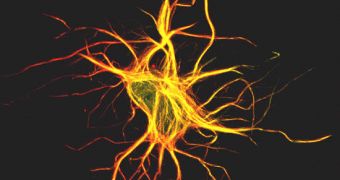Stanford University researchers have recently demonstrated in two scientific studies, published in the journals Nature and Science, that neurons in each brain need to follow a specific pattern, in order to function at peak capacity without wearing their “user” out. Precisely tuning the oscillations of brain waves is critical in the correct functioning of cognitive processes, and any disturbances in these patterns may result in incorrect integration of feelings of reward, as well as in errors in the way the human brain handles information. Such discrepancies have been identified in diseases such as schizophrenia and autism, PhysOrg reports.
Stanford Associate Professor of Bioengineering and of Psychiatry and Behavioral Sciences Karl Deisseroth, MD, PhD, who is the senior author of both papers, said that the research team managed to identify a common theme between the way the heart and the brain worked. Arrhythmia is a condition of the heart that makes it beat irregularly, a phenomenon that is triggered by malfunctioning muscles.
The same principle applies very often to the way neurons act. The science team learned that some groups of brain cells had the ability to “orchestrate” the actions of other neurons, in that they could set a rhythm, which the others then followed. If the pace can be sustained, then the brain operates optimally.
This field of research has thus far remained closed to experts, simply because no one could control neuron groups – not even in laboratory conditions – and see how these oscillations influence activity in the brain. “This has been a fundamental mystery. We have these cells that could be crucially involved in high-level, complex information processing and we see these oscillations that are happening, but people don't really know how to put all this together. But this is exactly the kind of thing now that we can address using optical methods,” Deisseroth explained.
“We tested different rhythms in the dopamine neurons and we found that lower-frequency rhythms were much less effective, but the high-frequency bursts were powerfully effective in giving rise to this behavioral effect of reward. Understanding more about these dopamine neurons has implications not only for drugs of abuse that directly access these feelings of reward, but also for depression, because in depressed people, one of the most prominent and debilitating symptoms is the inability to enjoy things,” the expert added.
In other words, the team stressed, people who were under the weather, who were feeling unhappy, or who felt they weren't thinking clearly might simply have out-of-tune inter-neural connections. Working on improving these connections could ultimately result in groundbreaking new treatments for conditions such as autism and schizophrenia, where brain cells exhibit high levels of irregularities in their interactions.

 14 DAY TRIAL //
14 DAY TRIAL //